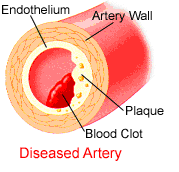Eat Right

It is important to eat fewer high-fat-cholesterol foods to bring about a healthier diet and heart. The risk of heart disease is affected by dietary habits.
What is fat?
Fat is a nutrient that is essential to the body for many functions. It helps with energy, thermal insulation, organ protection, cell structure and function. Recommended consumption to be less than or equal to 30%.
What is saturated fat?
Saturated fat is fat that is normally solid or semi-solid at room temperature. Foods high in saturated fat (Example: Animal fat) typically increases blood cholesterol.
What is cholesterol?
Cholesterol is a waxy, fat compound found in the tissues and organs of the body. Cholesterol plays an important role in metabolism, but is also a main contributor in the formation of fatty deposits in the arterial walls. This is a risk factor for coronary artery disease.
Steps to a healthier diet
· Eat less high fat foods (Example: animal fat)
· Fat consumption should be less than or equal 30% of the total daily calories
· Substitute some saturated fat with unsaturated fat. (Example: canola oil, olive oil, fatty fish-tuna, salmon)
· Decrease cholesterol consumption to less than 300 mg per day
· Select foods high in fiber and starch (Example: fruits and vegetables)
· If you drink alcohol, do so in moderation
Choose low-fat products
· Read the labels to identify the amount of fat
· Avoid products that list any ingredients high in saturated fat or cholesterol
· Avoid products that have several high-fat ingredients
· Make sure the serving size is close to what you would eat
Going out to eat
Make reasonable choices as you would at home.
· Choose vegetable oil and vinegar dressings
· Eat grilled or broiled chicken; remove skin
· Trim off excess fat from steak
· Avoid mayonnaise or cheese toppings - choose lettuce or tomato as a substitute
· Choose poached or broiled fillets
· Avoid cream sauce - choose marinara, clam, or tomato sauce without sausage or meat
· Avoid toppings such as sour cream or butter
· Eat plenty of vegetables, but without heavy sauces
· Choose sherbet and fresh fruit for dessert
· Use skim milk or nondairy, nonfat creamer in coffee or tea
Omega-3 Fatty Acids
In 1996 the American Heart Association released its Science Advisory, “Fish Consumption, Fish Oil, Lipids and Coronary Heart Disease.” Since then important new findings have been reported about the benefits of omega-3 fatty acids on cardiovascular disease. These include evidence from randomized, controlled clinical trials. New information has emerged about how omega-3 fatty acids affect heart function (including antiarrhythmic effects), hemodynamics (cardiac mechanics) and arterial endothelial function. These findings are outlined in our November 2002 Scientific Statement, “Fish Consumption, Fish Oil, Omega-3 Fatty Acids and Cardiovascular Disease.”
The ways that omega-3 fatty acids reduce CVD risk are still being studied. However, research has shown that they
- decrease risk of arrhythmias, which can lead to sudden cardiac death
- decrease triglyceride levels
- decrease growth rate of atherosclerotic plaque
- lower blood pressure (slightly)
AHA Recommendation
Omega-3 fatty acids benefit the heart of healthy people, and those at high risk of — or who have — cardiovascular disease.
We recommend eating fish (particularly fatty fish) at least two times a week. Fish is a good source of protein and doesn’t have the high saturated fat that fatty meat products do. Fatty fish like mackerel, lake trout, herring, sardines, albacore tuna and salmon are high in two kinds of omega-3 fatty acids, eicosapentaenoic acid (EPA) and docosahexaenoic acid (DHA).
We also recommend eating tofu and other forms of soybeans, canola, walnut and flaxseed, and their oils. These contain alpha-linolenic acid (LNA), which can become omega-3 fatty acid in the body. The extent of this modification is modest and controversial, however. More studies are needed to show a cause-and-effect relationship between alpha-linolenic acid and heart disease.
|
Patients without documented coronary heart disease (CHD)
|
Eat a variety of (preferably fatty) fish at least twice a week. Include oils and foods rich in alpha-linolenic acid (flaxseed, canola and soybean oils; flaxseed and walnuts).
|
|
Patients with documented CHD
|
Consume about 1 g of EPA+DHA per day, preferably from fatty fish. EPA+DHA in capsule form could be considered in consultation with the physician.
|
|
Patients who need to lower triglycerides
|
2 to 4 grams of EPA+DHA per day provided as capsules under a physician’s care.
|
Patients taking more than 3 grams of omega-3 fatty acids from capsules should do so only under a physician’s care. High intakes could cause excessive bleeding in some people.







